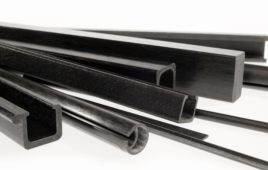Researchers at Stanford University have developed a computer that runs on water. This isn’t your home laptop, however: it’s “a tiny factory” that can autonomously organize drops of water. Drawing on the fact that bits are physical entities, Assistant Professor Manu Prakash and his team placed magnetized metal shapes inside a ferrofluid, which can be manipulated by a magnetic field created by electromagnetic coils that surround the computer.
The computer isn’t intended do convey information, although it could; instead, its designers imagine it as a way to organize tiny quantities of physical matter. People who study microfluidics are already well aware that water droplets can be used as bags or beakers to transport matter. If it can arrange different chemicals in highly specific ways, a miniature version of this computer could even be swallowed to help heal the sick.
Stanford computer processor uses moving water drops
Two things that don’t mix well are computers and water. Spill a glass of water on your notebook and odds are you will be in the market for a new notebook. Normal computers rely on electricity to power all the magic inside the processor to make the computer do what you want it to from playing games to crunching numbers Continue reading.
Filed Under: Materials • advanced




